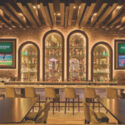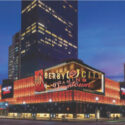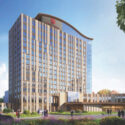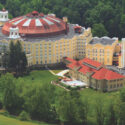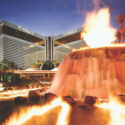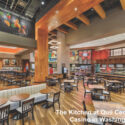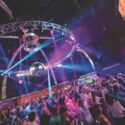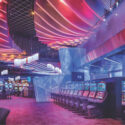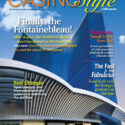
When the communist revolution of Fidel Castro toppled the regime of Fulgencio Batista in 1959, it also toppled Cuba’s healthy and thriving gaming industry. Of course, the industry was thriving for its organized crime owners and for Batista, who got a cut of their end, but it also employed lots of Cubans.
Starting in the 1920s, thousands of Americans and Latin Americans traveled to Cuba each year to enjoy the legal alcohol, wide-open gambling, bordellos and Havana nightlife.
After World War II, the casino industry developed robustly. Many casino resorts opened, and like Las Vegas a decade or two later, each one was more elaborate than the last.
But one hotel was the center of the casino industry: the Hotel Nacional de Cuba in Havana. Opened in 1930, the hotel was on the Hill of Taganana, with panoramic views of the city and the ocean. The hotel has a unique parti pris design that gave a majority of the rooms a view of the ocean across the road. Each of the eight floors held 74 rooms, except for the top, which has 64 rooms. The hotel was developed by the U.S. engineering firm of Purdy and Henderson, and designed by the New York architecture firm of McKim, Mead and White. It’s clad in coral stone and is a mix of architectural styles.
The Hotel Nacional was owned and operated by a group of investors who also owned New York’s swanky Plaza Hotel. Its early history was somewhat tragic, as the revolution that brought Batista to power in 1933 ravaged the hotel. The hierarchy of the Cuban military defended the hotel against the military rank and file, culminating in the Battle of the Hotel Nacional, which decided the conflict but caused substantial damage to the hotel, including many shell and bullet holes, some of which remain today.
In 1943, it was purchased by the Kirkeby Hotels company and operated by the firm for more than a decade.
In 1946, the infamous “Havana Conference” of mob bosses was held at the Hotel Nacional. The meeting was called by Lucky Luciano and Meyer Lansky. Attendees included Santo Trafficante Jr., Frank Costello, Albert Anastasia, Vito Genovese and many others. You may remember a depiction of the conference in Francis Ford Coppola’s The Godfather Part II.
Lansky was the power, and in 1955 persuaded Batista to allow him to take over a wing of the hotel and create high-roller suites for gamblers at his casino downstairs, Casino Internacional. Run by Wilber Clark, who later was the owner of the Desert Inn in Las Vegas, the casino boasted revenue that routinely bettered any Las Vegas gaming hall. Lansky sold the casino to Michael McLaney and Baltimore Colts owner Carroll Rosenbloom in 1958.
When Castro took over a year later, he immediately closed all Cuban casinos, but relented a few days later after massive demonstrations by casino workers—and warnings from his advisers that the closure would destroy the economy. But the damage had already been done. U.S. tourists avoided the island. The casino industry, along with the Cuban economy, collapsed anyway. Castro later reinstated his ban on casinos in Cuba.
Today, the Hotel Nacional de Cuba still stands and welcomes guests, albeit with a vacant casino area awaiting a revival. With relaxed relations with the U.S. and the easing of travel restrictions, it could still happen.



